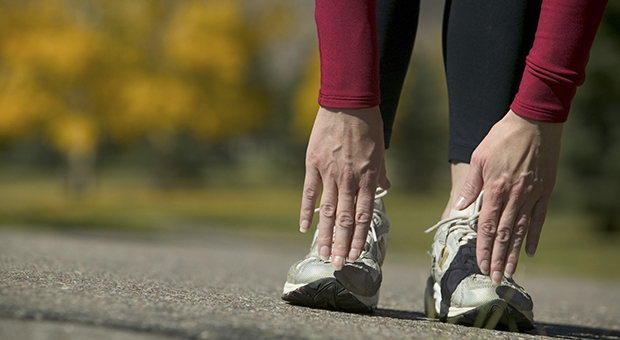Social media and activity feedback give no more benefit than simpler strategies

Providing physically inactive adults access to online social networking about walking as well as personalized feedback did not add more benefit than just providing emailed tips, according to Penn State College of Medicine researchers. The results suggest that despite enthusiasm for the potential of online networking sites to change behavior, using these sites and added feedback may not further increase adults' physical activity beyond simpler strategies such as informational tips.
“Given prior research showing that physical activity is influenced by physically active role models, we may need to find ways to expose people to these role models that do not require participants to engage in the time-consuming online or in-person interactions that have been part of this study, and numerous other prior studies,” said Liza Rovniak, associate professor of medicine and public health sciences. “More needs to be learned about how to address barriers to online social media participation.”
In this study, the researchers compared the effects of three approaches for building social networks on improvements in physical activity among 308 physically inactive adults. Study participants were recruited from the greater Harrisburg area and Lebanon, Pennsylvania, and were randomly assigned to one of the three groups. The promotion group received weekly emailed tips on how to start a walking routine and find walking companions. The activity group received the same along with access to an online walking program that provided weekly feedback on the amount and the quality of their walking and personalized walking goals for the next week. The “social networks” group received the same as the second group but also access to a private Facebook or Ning.com group to arrange walks with and receive support from others. They also received personalized feedback on their social interaction attempts.
Study participants were then evaluated at three months and nine months after the start of the study for change in their activity levels, aerobic fitness, body mass index (BMI), waist circumference and blood pressure. Instead of having participants self-report these changes as was done in most previous studies, objective measurements were made by research staff. Researchers reported their results in the Annals of Behavioral Medicine.
Researchers believed that the social networks group would walk more than the activity group. They believed that both of these groups would increase walking more than the promotion group. However, simply providing the tips was just as effective as the more involved approaches, although improvements in all groups were moderate. At three months, all groups improved their activity levels, blood pressure and waist circumference from the start of the study. At nine months, these improvements were maintained and BMI and aerobic fitness improved.
Interventions were most effective among participants who had the least physical activity at the start of the study. These participants increased their physical activity by an hour per week on average at three months.
“Regardless of which intervention people receive, it may be hard to develop social networks to increase physical activity, because most of the people around us – about 70 percent – are very inactive. These inactive people are unlikely to serve as active role models or to prompt us to increase our own activity,” Rovniak said.
To achieve more substantial, long-term population-wide changes in physical activity levels, Rovniak said, social networks may need to provide stronger reinforcers for physical activity to compete against activities like watching TV or working on the computer.
“A reinforcer is simply a consequence, like praise, money, increased energy or reduced pain, that follows a behavior and increases the likelihood that the behavior will reoccur,” she said. “These results suggest the need for more powerful reinforcers to increase population-wide physical activity. Some possible reinforcers for physical activity that could be more extensively explored in future research include financial incentives or time saved by walking. Our research suggests that for many people, simply receiving feedback on their physical activity through activity tracking devices such as pedometers and wrist monitors is not going to provide sufficient long-term reinforcement to continue recommended physical activity levels over the long-term.”
While the fitness device industry and public health programs are developing and evaluating devices with motivating screen displays and graphical and text feedback, more powerful consequences may be needed to get most people to consistently be more active, she said.
Rovniak said future research needs to study what reinforcers are most effective in different situations and among different populations.
Limitations of this study include limited ethnic, racial and socioeconomic diversity and not including a control group that received no intervention.
Other researchers are Lan Kong, associate professor of public health sciences, Chester Ray, professor of medicine and cellular and molecular physiology, Jennifer Kraschnewski, associate professor of medicine and public health sciences, Elizabeth Kiser, research associate, Vernon Chinchilli, professor of public health sciences, Daniel George, associate professor of humanities, and Christopher Sciamanna, professor of medicine and public health sciences, all of Penn State College of Medicine; Stephen Matthews, Penn State; Melbourne Hovell, San Diego State University; Ding Ding, University of Sydney; and James Sallis, University of California, San Diego.
The National Institutes of Health funded this research. (K99/R00 HL088017) (UL1 TR000127) (KL2 TR000126) (R24 HD41025)
If you're having trouble accessing this content, or would like it in another format, please email Penn State Health Marketing & Communications.
